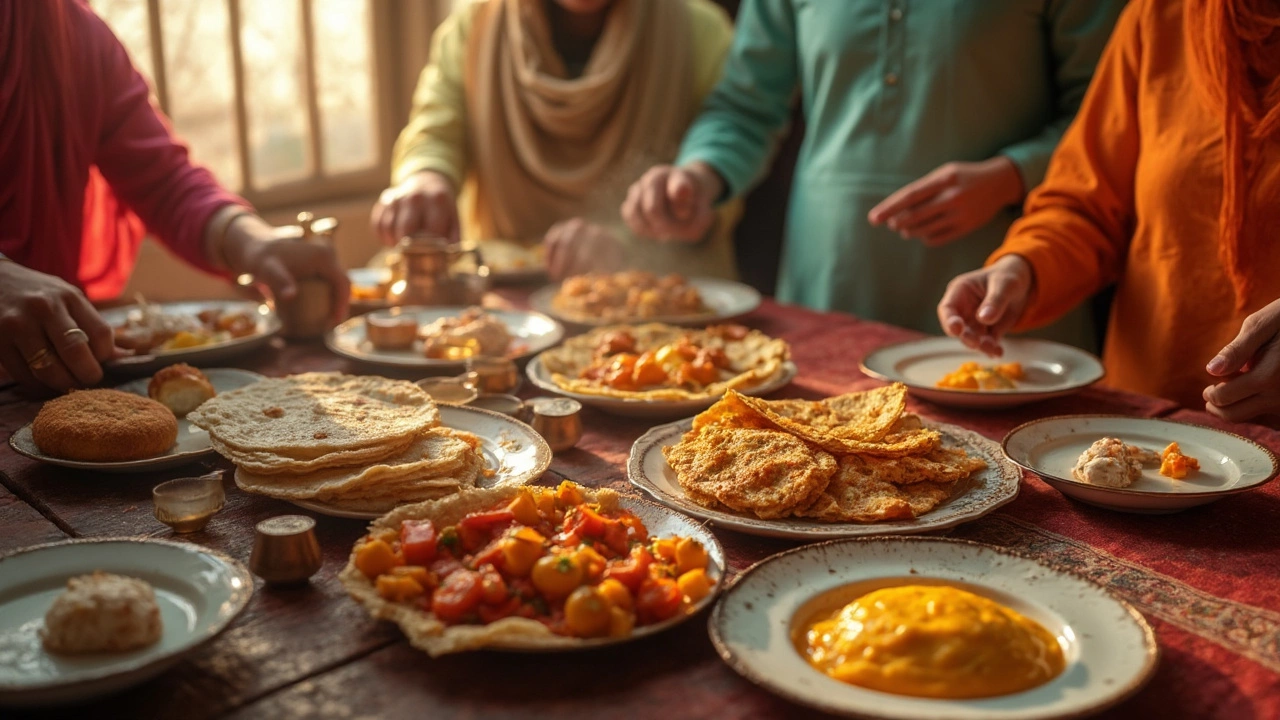Paratha: Easy Flatbread Recipes, Tips & Variations
If you’ve seen a flaky, buttery round on a plate and wondered how to make it at home, you’re looking at a paratha. It’s a simple Indian flatbread that can be plain or stuffed, crispy or soft, and works for breakfast, lunch, or dinner. The great thing about paratha is that you only need a few pantry staples – flour, water, oil or ghee, and a pinch of salt – to get a tasty result.
What Is Paratha?
Paratha belongs to the family of Indian breads that are cooked on a hot pan. Unlike roti, which stays soft, paratha gets layers of oil or ghee folded into the dough, creating a light, flaky texture. There are many versions: plain aloo (potato) paratha, gobi (cauliflower) paratha, and even sweet versions with jaggery. Each version follows the same basic technique, so once you master the plain method, you can fill it with anything you like.
How to Make Perfect Paratha
Start by mixing 2 cups of whole‑wheat flour with a pinch of salt. Add a tablespoon of oil and enough water to form a soft dough – not too sticky, not too dry. Let the dough rest for 15 minutes; this makes it easier to roll out.
Divide the dough into small balls, about the size of a golf ball. Lightly flour a surface, flatten a ball, and brush a little oil on one side. Fold it in half, brush oil again, and repeat two more times. This folding creates the layers that give paratha its signature bite.
Roll the folded ball gently into a 6‑inch circle. Heat a skillet over medium heat, add a tiny dab of oil, and place the rolled dough on the pan. Cook for about 30 seconds, flip, brush the other side with oil, and press lightly with a spatula. Cook until both sides are golden brown and a few bubbles appear. The result should be crisp on the outside and soft inside.
For stuffed paratha, roll the dough a bit thinner, place a spoonful of your chosen filling in the center, then fold the edges over and seal before rolling again. Follow the same cooking steps.
Serving ideas are endless. Pair a plain paratha with yogurt, pickles, or a bowl of dal for a quick meal. A potato‑stuffed paratha goes great with a dollop of butter and a side of chutney. If you’re looking for a lighter option, try a whole‑wheat version with less oil and serve it with fresh salad.
Paratha can fit into a healthy diet when you watch the oil amount and choose whole‑grain flour. Adding extra veggies to the stuffing boosts fiber and nutrients. It’s also a good source of carbs for an energy‑rich breakfast.
Quick tip: If you notice the paratha sticking while rolling, dust the surface and the dough lightly with flour. Too much flour can make the bread dry, so use just enough to keep it smooth.
Another trick is to keep a few rolled parathas in the fridge. Place a sheet of parchment paper between each and store them in an airtight container. When you’re ready to eat, simply heat them on a skillet for a minute – they’ll be as fresh as the day you made them.
Whether you’re a beginner or a seasoned cook, mastering paratha opens the door to countless variations. Experiment with different flours, like millet or rye, to change the flavor. Add spices such as cumin or ajwain to the dough for an extra punch. The possibilities are limited only by your pantry.
So next time you crave a satisfying flatbread, grab some flour, a pan, and give paratha a try. You’ll be surprised how fast a delicious, homemade bread can appear on your table.
What Do Pakistanis Eat for Breakfast? Classic Morning Foods Explained
Pakistani breakfasts are far from boring—think hot bread, spicy eggs, and comforting chai. Whether on a busy morning or a slow weekend, breakfast in Pakistan is hearty and varied. This article digs into what a typical Pakistani breakfast looks like, how it’s made, and some smart shortcuts for busy days. Expect mouthwatering tips and cool facts that’ll make your own mornings way more interesting. Hungry yet? Let’s get going.
